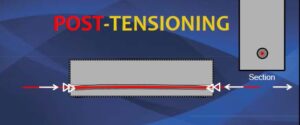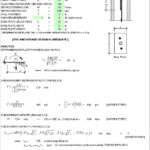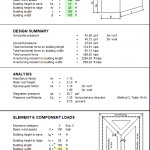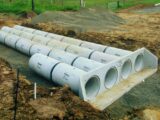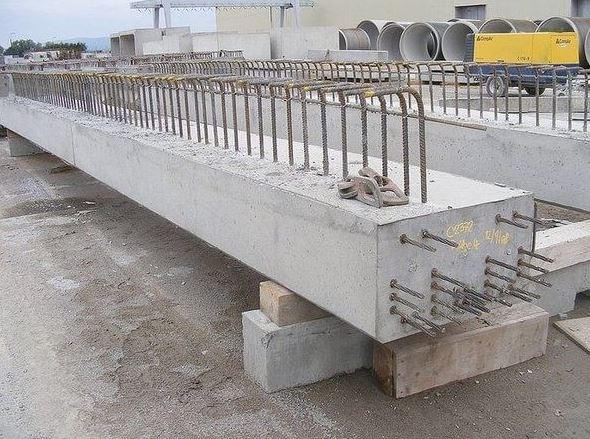
What is the difference between Pre-tension and Post-tension in concrete?
10 July 2021Pre-tension Concrete
Pretension in concrete is the method when the concrete is prestressed with tendons before the placing of the concrete. and It is a suitable method for small structural elements. the pre-tensioning members are produced in the mold.
To pretension concrete the steel is first tensioned in a frame or between anchorages external to the member. The concrete is then cast around it. After the concrete has developed sufficient strength the tension is slowly released from the frame or anchorage to transfer the stress to the concrete to which the tendons have by that time become bonded. The force is transmitted to the concrete over a certain distance from each end of a member known as the transfer length.
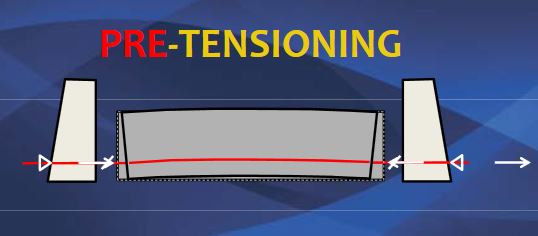
Post-tension Concrete
Post tension in concrete is the method when the prestressing process is done after the concrete attains its strength. It is suitable when the structure is heavy and this method is developed due to bearing.
Post-tensioned concrete is made by casting concrete that contains ducts through which tendons can be threaded. An alternative is to cast the concrete around tendons that are greased or encased in a plastic sleeve.
When the concrete has sufficient strength the tendons are tensioned by means of portable jacks. The load is transmitted to the concrete through permanent anchorages embedded in the concrete at the ends of the tendons.
Ducts are usually grouted later or filled with grease to protect the tendons against corrosion. In some applications the post-tensioning tendons are run alongside the concrete member.
Pre-tension Concrete vs Post-tension Concrete
| Sr.No | Pretensioning | Post-tensioning |
| 1 | Pretension is the technique in which we are imparting tension in strands before placing the concrete. | Post tensioning is done by forming a duct in which strands are pulled (tensioned) after the concrete gains it’s full strength. |
| 2 | In this type of concrete, the pre-stressing cables called the strands are tensioned before casting the concrete and then concrete is casted enclosing the tensioned cables. | In this type of concrete, the strands are enclosed within a duct in the form and then concrete is casted. The process of tensioning the strands is carried out after the concrete attains its sufficient strength. |
| 3 | Post-tension Concrete | In this method, products are changed according to a structure. |
| 4 | Pre-tensioning members are produced in a mould. | Cables are used in place of wires and jacks are used for stretching. |
| 5 | It is cheaper because cost of sheathing is not involved in pretensioning | It is costlier because cost of sheathing is required. |
| 6 | Pre-tensioning is preferred when the structural element is small and easy to transport | Post-tensioning is preferred when the structural element is heavy. |
| 7 | Loss of prestressing isn’t less (about 18 %) | Loss of prestressing isn’t more (about 15 %) |
| 8 | Small sections are to be constructed | Size of a member is not restricted, long-span bridges are constructed by post-tensioning |
| 9 | It is more reliable and durable | The durability depends upon the two anchorage mechanism |

